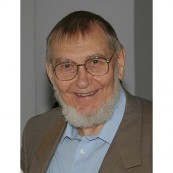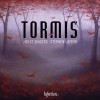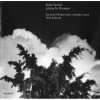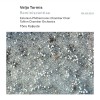| Country: | Estonia |
| Period: | Contemporary classical music |
Biography
Veljo Tormis (born 7 August 1930 in Kuusalu) is an Estonian composer, regarded as one of the greatest living choral composers[1][2] and one of the most important composers of the 20th century in Estonia.[3] Internationally, his fame arises chiefly from his extensive body of choral music, which exceeds 500 individual choral songs, most of it a cappella. The great majority of these pieces are based on traditional ancient Estonian folksongs (regilaulud), either textually, melodically, or merely stylistically.
His composition most often performed outside Estonia, Curse Upon Iron (Raua needmine) (1972), invokes ancient Shamanistic traditions to construct an allegory about the evils of war. Some of his works were banned by the Soviet government, but because folk music was fundamental to his style most of his compositions were accepted by the censors.
More recently, Tormis' works have been lionized in worldwide performances and several recordings by Tõnu Kaljuste and the Estonian Philharmonic Chamber Choir. In the 1990s, Tormis also began to receive commissions from some of the pre-eminent a cappella groups in the West such as the King's Singers and the Hilliard Ensemble.
Tormis has famously said of his settings of traditional melodies and verse: "It is not I who makes use of folk music, it is folk music that makes use of me."[3] His work demonstrates his conviction that traditional Estonian and other Balto-Finnic music represents a treasure which must be guarded and nourished, and that culture may be kept alive through the medium of song
Tormis had a profound experience with choral music starting at an early age. His father was a choral director, organist, and music teacher. His delight in the contrasting timbres provided by the organ stops may also be connected to his later orchestration of choral textures, a hallmark of his mature style.[3]
Tormis began his formal musical education in 1943 at the Tallinn Music School, but was interrupted by World War II and illness. In 1949, he entered the Tallinn Conservatory and continued his studies at the Moscow Conservatory (1951–1956). He quickly acquired teaching positions at the Tallinn Music School (1955–60) and the Tallinn Music High School (1962–66), but by 1969 was supporting himself exclusively as a freelance composer.
From his student days until his retirement from composition in 2000, Tormis composed over 500 individual choral songs, as well as other vocal and instrumental pieces, 35 film scores, and an opera. Despite the censorship of several of his more politically provocative works in the late 1970s and the 1980s, he remained an incredibly celebrated composer whose works were performed throughout the Soviet Union and Eastern Europe. In Eastern Europe, he is regarded as one of the great contributors to the 20th century repertory of choral music. Dissolution of the Soviet Union in 1991 has allowed increased access to the Soviet censored compositional output. The music of Tormis, along with other composers in the region, is experiencing increased rates of programing and publishing, allowing for increased appreciation of the choral and vocal music traditions.









